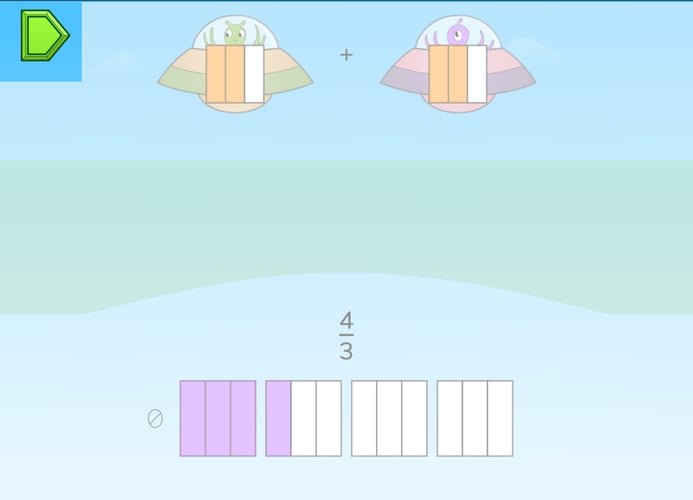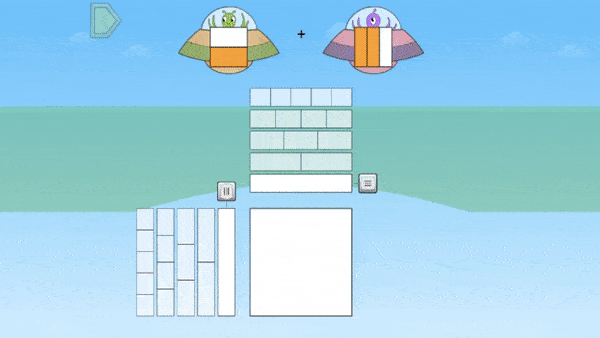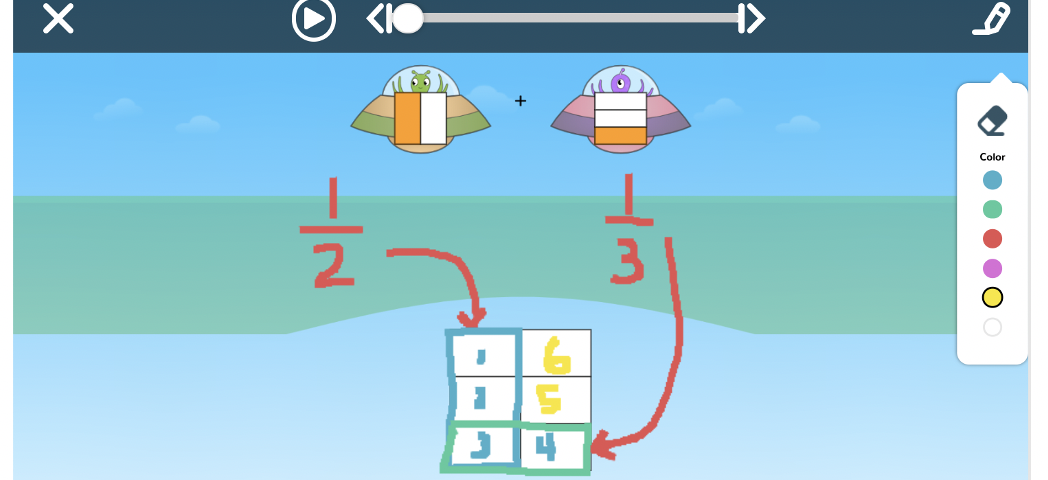This article features contributions from MIND Research Institute's Senior Instructional Developers, Carl Robison, Martha Klingshirn, and Senior UX Researcher Alesha Arp.
Does this look like you when your child asks you to help them with their math homework?

You’re not alone. Most parents think about math as mountains of worksheets, fact memorization, and strict rules for solving arithmetic problems. It's probably been a while since you “memorized” these facts and rules, so you may feel ill-prepared to help your child. But before you run for the hills and say, “I hate math!” or “I was never good at math,” think about the effect these negative comments can have on your child’s attitude toward math and their ability to learn.
They're likely to believe that it is OK to not like math or to not be good at math. And when confronted with a difficult problem, they may give up easily because they feel like they just can’t do it.
That being said, what if their homework looked like this?
 Immediate informative feedback in ST Math gameplay.
Immediate informative feedback in ST Math gameplay.
ST Math is not your typical math program filled with digitized worksheets. Through vibrant visuals and intuitive gameplay, students learn how to solve math problems while having fun!
Students help JiJi, ST Math’s penguin mascot, overcome obstacles by solving math puzzles – and they associate JiJi with the thrill of challenge and success. JiJi crosses the screen every time a student successfully completes a puzzle, leading them to the next challenge. Kids love the program and parents do too!
Here are five main reasons why parents love ST Math:
Productive struggle is the process of effortful learning that develops grit and creative problem solving. Take a second to remember a time in your life when you overcame a significant challenge. While frustrating at first, you can now look back in hindsight and appreciate the personal growth you experienced from trying, failing, and finally figuring out how to make things right.
The same process is critical for your child’s emotional and intellectual development. When students play ST Math games, the puzzles encourage students to see the bigger picture and make connections between different mathematical concepts.
Puzzle after puzzle, players can see why they got an answer wrong or right before they move on to the next level. Because problems are presented through visual models that build a strong conceptual understanding of the mathematics, children learn concepts like why they need to find a common denominator before they can add fractions with unlike denominators, as opposed to following a procedure without understanding, like cross multiplication.
 ST Math puzzles are scaffolded across grade levels to build upon students’ conceptual understanding.
ST Math puzzles are scaffolded across grade levels to build upon students’ conceptual understanding.
ST Math’s visuals are bright and inviting, resembling the format of some of your child’s favorite video games. In the new ST Math, there's a go button (upper left corner) that the player has to click on after they make their choice and before the puzzle plays out. This allows students to pause and check their work before they see whether they got the answer right or wrong.

Math is often seen as a quick recall of facts or following set procedures. Students who know their facts and can follow the procedure to find the correct answer are seen as being good at math. Therefore, making mistakes is viewed as a bad thing.
In contrast, mistakes should be seen as part of the process of learning. After all, if you already know how to do something, you are not learning. Children will play Super Mario over and over until they complete a level. They do not see the mistakes they make in the game as a reflection of their ability to master each level. They persevere until they pass. ST Math games follow the same premise.
The program employs a unique, patented learning model that leverages the brain's innate spatial-temporal reasoning ability to solve mathematical problems. Concepts are encoded and reinforced as your child manipulates objects through time and space. ST Math starts by teaching foundational concepts visually, then connects the ideas to symbols and language.

Think of this tool as your child's personal instant replay. They can toggle back and forth between different steps in the puzzle and identify any mistakes. You may hear them say things like, “Oh, I selected too many boxes. I counted one of them twice.” Your child may also use the new annotation tool to show their strategies visually.
Ask your child what their strategy was when selecting an answer. Not only will this boost their self-confidence because they’re teaching you, but it gives you a glimpse of how they’re solving these problems.

ST Math puzzles can now be paused and annotated upon to convey a student’s thinking.
One of the primary goals of ST Math is to inspire students to take charge of their learning. When your child is stuck on a puzzle, we recommend that you ask them to discuss their thought process with you. What did they notice and what do they think they need to change about their strategy? Even if they are wrong a second time, help them embrace the struggle. Say things like, “I am so impressed with how hard you are working,” or “What did we learn from that try?”
There is no “math gene” that makes one person good at math and another bad at math. We never stop learning. Learning is a process.
So the next time your child asks for help with their math homework, there’s no need for fence jumping! Realize you don’t have to be an expert. Embrace the struggle with your child and recognize that you’ll help your child more by being a facilitator of their thinking rather than supplying an answer.
Martha is the Senior Instructional Developer for the Product Management team.
Comment